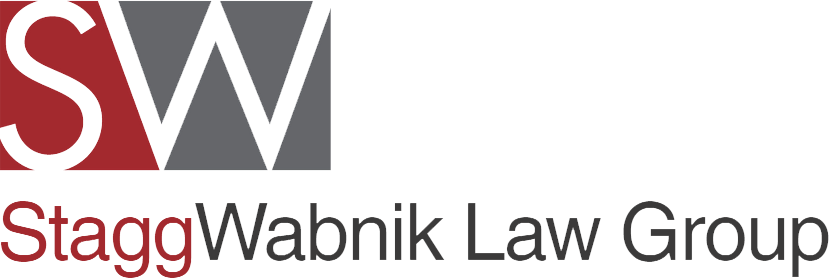Navigating Complex Labor and Employment Disputes in a Changing Regulatory Landscape
- Stagg Wabnik
- Aug 20, 2024
- 3 min read
Updated: Jul 25

The ever-evolving regulatory environment surrounding labor and employment law presents significant business challenges. Dealing with these complexities requires a thorough understanding of current laws, strategic planning, and proactive compliance measures. We will look at managing labor and employment disputes in this dynamic landscape, offering insights into regulatory changes, common disputes, and effective management strategies.
Understanding the Regulatory Landscape
Current Labor and Employment Regulations: The foundation of labor and employment law is built on regulations like the Fair Labor Standards Act (FLSA), the Family and Medical Leave Act (FMLA), and the Occupational Safety and Health Administration (OSHA) guidelines. These laws set minimum wage, overtime, employee leave, and workplace safety standards. Significant updates have been recently made, such as expanding employee classification rules and enhanced protections for gig workers. These changes require businesses to stay vigilant and adapt their policies to remain compliant.
Impact of Federal vs. State Laws: One of the complexities in labor law is the interplay between federal and state regulations. For instance, while the FLSA sets the federal minimum wage, many states have enacted higher minimum wage laws. Additionally, states like California have stringent employee classification laws under the ABC test, which differ from federal guidelines. Businesses operating across multiple states must navigate these discrepancies carefully to avoid legal pitfalls.
The Role of Government Agencies: Agencies like the Department of Labor (DOL), the Equal Employment Opportunity Commission (EEOC), and the National Labor Relations Board (NLRB) play pivotal roles in enforcing labor laws. These agencies have ramped up enforcement activities, focusing on wage theft, discrimination, and worker misclassification. Companies should monitor trends in enforcement to anticipate potential audits and investigations, ensuring that they are prepared to demonstrate compliance.
Common Types of Labor and Employment Disputes
Wage and Hour Disputes: These disputes often arise from issues such as unpaid overtime, incorrect employee classification, and meal/rest break violations. Businesses can minimize these risks by conducting regular audits of payroll practices and ensuring that all employees are correctly classified according to federal and state laws.
Discrimination and Harassment Claims: Since movements like #MeToo, there has been an increase in discrimination and harassment claims. Employers should implement robust anti-discrimination policies, provide regular employee training, and establish clear procedures for reporting and addressing complaints. A proactive approach to workplace culture and compliance can reduce the likelihood of these claims.
Collective Bargaining and Union Disputes: The NLRB's recent changes to the joint-employer rule have broad implications for businesses engaged in collective bargaining. Employers must carefully evaluate their relationships with subcontractors and franchisees to determine if they could be deemed joint employers under the new rule. Understanding these dynamics is crucial for effective union negotiations and avoiding unfair labor practice claims.
Strategies for Managing Disputes
Proactive Compliance Programs: Developing a proactive compliance program important for staying ahead of regulatory changes. This includes regular HR staff and managers training, updating employee handbooks, and conducting internal audits to identify and rectify issues before they become a real problem. Continuous education and staying informed about regulatory updates are critical components of an effective compliance strategy.
Alternative Dispute Resolution (ADR): ADR methods, such as mediation and arbitration, offer a less adversarial and more cost-effective way to resolve disputes. These methods can preserve business relationships and keep disputes confidential. Companies should consider integrating ADR clauses into their employment contracts to streamline the resolution process.
Adapting to Regulatory Changes: The regulatory landscape is constantly changing, with new laws and interpretations emerging regularly. Businesses should engage legal counsel to help navigate these changes and ensure their businesses remain compliant. Staying informed through legal updates and industry associations can also help businesses effectively anticipate and adapt to new regulations.
Case Studies and Practical Examples
Recent High-Profile Cases: Case studies of recent labor disputes, such as those involving gig economy companies over employee classification, illustrate businesses' challenges. These cases highlight the importance of staying compliant with federal and state laws and the potential financial and reputational risks of non-compliance.
Best Practices from Industry Leaders: Companies that have successfully navigated labor disputes often share common strategies, such as investing in comprehensive compliance programs, utilizing technology for compliance tracking, and maintaining open lines of communication with employees. Learning from these examples can help other businesses refine their approach to labor relations.
Contact Stagg Wabnik Law Group
Navigating the complexities of labor and employment disputes in a changing regulatory landscape requires a proactive and informed approach. Businesses that stay ahead of regulatory changes, implement robust compliance programs, and engage in effective dispute-resolution strategies are better positioned to protect their interests and maintain positive employee relations.
For guidance on managing labor and employment disputes, contact Stagg Wabnik Law Group at (516) 812-4550 or visit our contact page to schedule a consultation. Our experienced attorneys are ready to help you navigate these challenges confidently and clearly.





Comments